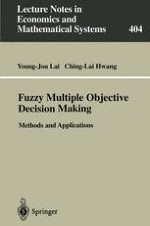In the last 25 years, the fuzzy set theory has been applied in many disciplines such as operations research, management science, control theory, artificial intelligence/expert system, etc. In this volume, methods and applications of crisp, fuzzy and possibilistic multiple objective decision making are first systematically and thoroughly reviewed and classified. This state-of-the-art survey provides readers with a capsule look into the existing methods, and their characteristics and applicability to analysis of fuzzy and possibilistic programming problems. To realize practical fuzzy modelling, it presents solutions for real-world problems including production/manufacturing, location, logistics, environment management, banking/finance, personnel, marketing, accounting, agriculture economics and data analysis. This book is a guided tour through the literature in the rapidly growing fields of operations research and decision making and includes the most up-to-date bibliographical listing of literature on the topic.
